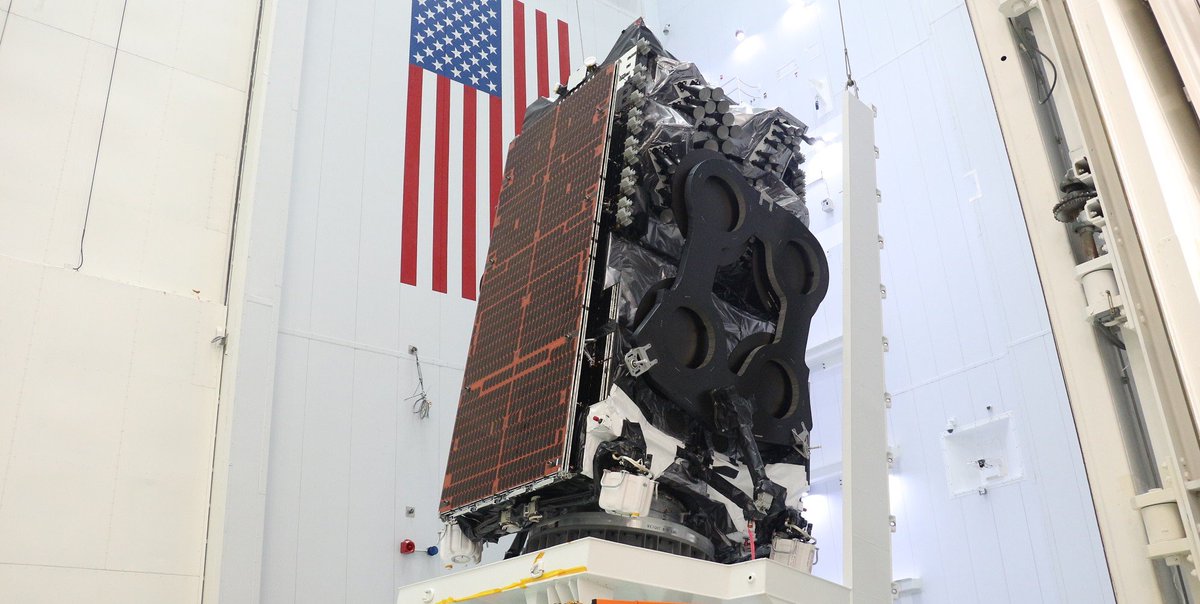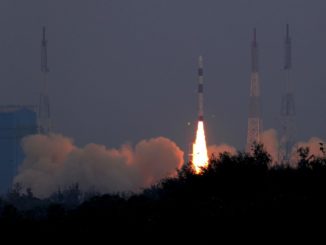
A powerful commercial communications satellite to broadcast Internet signals over the Asia-Pacific region has arrived at Cape Canaveral for final launch preparations ahead of a planned Dec. 15 liftoff on top of a SpaceX Falcon 9 rocket.
The JCSAT 18/Kacific 1 communications satellite, based on Boeing’s 702MP satellite design, is a shared spacecraft between Sky Perfect JSAT Corp. of Japan and Kacific, a startup telecom company headquartered in Singapore.
Kacific announced the satellites’s arrival at Cape Canaveral on Thursday. Ground crews will complete final testing on the spacecraft and load it with maneuvering propellant ahead of its launch next month.
The spacecraft was built at Boeing’s satellite factory in El Segundo, California. According to Kacific, the satellite will weigh around 15,000 pounds (6,800 kilograms) fully fueled for launch.
SpaceX’s Falcon 9 rocket will deploy the JCSAT 18/Kacific 1 satellite in an elliptical transfer orbit, then the spacecraft will use its on-board propulsion system to reach a circular geostationary orbit more than 22,000 miles (nearly 36,000 kilometers) over the equator. The satellite will maneuver into a position over the Asia-Pacific to begin a planned 15-year service life.
JSAT will use the satellite’s Ku-band capacity to provide communication services over Japan and the broader Asia-Pacific region, with a coverage range extending from Indonesia and Southeast Asia to coastal China and Eastern Russia.
Kacific’s mission will utilize the satellite’s Ka-band payload, which includes 56 spot beams delivering up to 60 gigabits per second of data throughput capacity, the company said.
The new satellite will “provide the most powerful signal level ever achieved in a commercial satellite in the (Asia-Pacific) region,” Kacific said in a statement. Founded in 2013, Kacific says the JCSAT 18/Kacific 1 spacecraft will stream broadband to 25 nations in Southeast Asia and in the Pacific islands, where dispersed populations and rugged terrain pose roadblocks for building terrestrial Internet links.
Kacific says education, health care and emergency response services will benefit from the company’s satellite broadband network.
The JCSAT 18/Kacific 1 spacecraft is currently scheduled for launch Dec. 15 from Cape Canaveral’s Complex 40 launch pad during a window opening at 7:10 p.m. EST and closing at 8:38 p.m. EST (0010-0138 GMT on Dec. 16).
The mission is second in line at pad 40. SpaceX first plans to launch a Falcon 9 flight Dec. 4 with a Dragon supply ship heading for the International Space Station with several tons of cargo, including a sharp-eyed hyperspectral Earth-imaging instrument.
Meanwhile, SpaceX teams at pad 39A aim to launch a modified Falcon 9 rocket next month on a high-altitude abort test of the company’s Crew Dragon spacecraft. The escape demonstration, which will occur around 90 seconds after liftoff, will prove the capsule’s ability to get away from a failing launch vehicle in flight.
The test is a prerequisite for SpaceX’s first Crew Dragon mission with astronauts in early 2020.
Email the author.
Follow Stephen Clark on Twitter: @StephenClark1.



